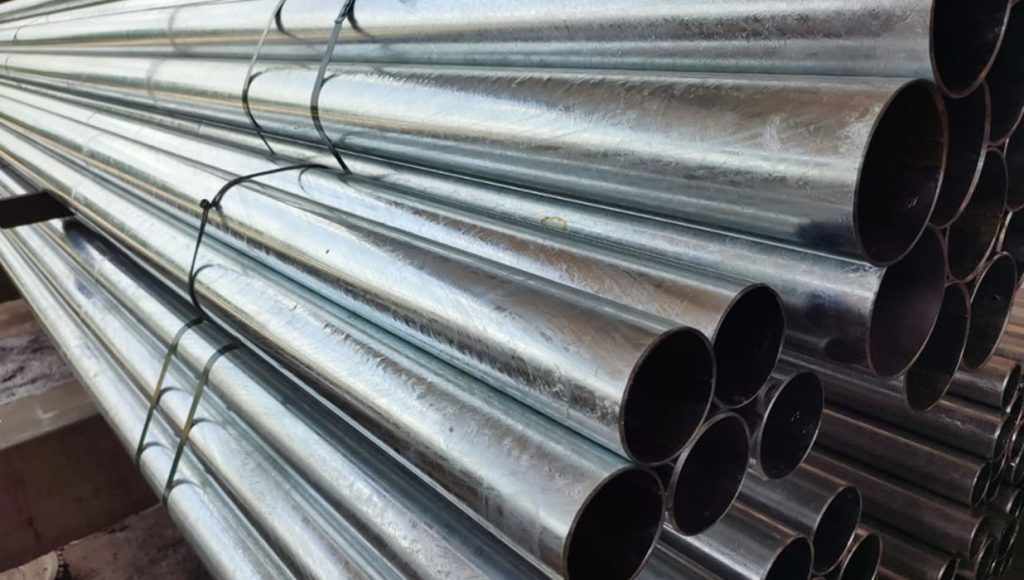HDG or Hot-dip galvanizing is a process of coating metals with hot galvanized coatings. These are a protective coating to prevent corrosion and serve as protection in harsh environmental conditions. HDG typically corrodes at a rate of 1/30 compared to steel without corrosion protection.
Factors that can Corrode
- Humidity levels above 60%
- Wet environments
- Combining an increase in temperature with corrosive elements like humidity and industrial pollutants.
- Strong Alkali
- Acids, in particular, sulfuric acids created by sulphur dioxide pollution in metropolitan areas and hydrogen sulfide emissions from volcanoes, hot springs, natural gas, and sewage gas
- Chlorides and sulfates
- Moss and lichen
Galvanized Steel has Good Resistance to:
- Concrete
- Mortar
- Lead
- Tin
- Zinc
- Aluminum
Of course, how long would always depend on many factors, but how long does hdg last? That is the purpose of the blog.
Extreme Heat
Hot-dip galvanized steel usually starts to lose its structural integrity once the heat of the environment reaches 200 degrees celsius. Once the environmental conditions exceed 200 degrees celsius, the zinc coating starts to peel off.
To explain this, let us get into a bit of Science. Heat expands. When an HDG steel gets exposed to temperatures above 200C, the zinc-iron alloy will not expand at the same rate as the zinc coating; hence, gaps between the alloy and the outer zinc layer will start to form.
Extreme Cold
The period until first maintenance for HDG steel is unaffected by temperatures below -40° F (-40° C), at least not yet. At these temperatures, HDG steel has been utilised in constructions at the poles for more than 20 years without experiencing any maintenance issues. However, temperatures below -100 degrees can result in brittle steel.
The Thickness of the Coating
The corrosion resistance of steel primarily depends on the thickness of the coating.
How Damaging is Every Environment?
Industrial Environment
Industrial environments tend to have the most corrosive elements. This can be aggressive towards hot-dip galvanized coatings and steel. In industrial environments, there are so many types of pollution; sulfur dioxide pollution and phosphate pollution from car exhausts can increase the corrosion rate of zinc coatings.
Tropical Marine Environment
Temperatures in tropical marine environments tend to fall below the freezing point, which isn’t as damaging, but extreme cold can result in brittle steel. A tropical marine environment also has high humidity levels; these humidity materials are full of chloride, which can result in early steel rust. These environmental factors make the tropical marine environment more corrosive than the industrial environment.
Temperate Marine Environment
Temperate marine environments are not that corrosive toward hot-dip galvanized steels. There is a lower temperature (but not extreme temperatures) and lower humidity.
Suburban and Rural Environment
Both environments are most friendly for hot-dip galvanizing and prolonged galvanic corrosion. They have low humidity, better temperatures, as well as lower levels of sulfur and other corrosive materials. In these types of environments, your corrosion protection would last longer.
In Summary
If handled carefully, kept dry, and out of the weather, a galvanized steel bucket (made using any process) may last forever. However, corrosion is unavoidable for those galvanized buckets and tubs intended to be used as agricultural water buckets, animal feeds, landscape ornaments, and garden planters. Hot dipped galvanized steel, which typically lasts for roughly 70 years in various settings, should be used for continuous outdoor usage.

